Tarot has the power to simplify our 3D problems into pictorial, 2D solutions. But what if we could take those solutions and walk around inside them? What would it feel like to touch the healing waters of the Star card? To be cradled in the womb of the Empress? To look the Devil in the eye? To walk the four walls of the Emperor’s kingdom?
What if I told you such a place exists?
This month I had the privilege of visiting Niki de Saint Phalle’s Il Giardino dei Tarrochi, the Tarot Garden. I’ve dreamt of seeing this tarot-inspired sculpture park since I first learned about it in 2021. Back then, at the height of the Pandemic, when traveling across the Atlantic seemed like an impossibility, I joined an online panel discussion about Saint Phalle and her magical garden. Much like the lightening bolt inspiration that moved her to undertake this decades-long project, I was overcome seeing the magnitude and wildness of her sculptures. In that moment, though it seemed insurmountable, I swore I would one day make the pilgrimage.
Niki de Saint Phalle turns pain into play
Saint Phalle, a self-taught, French-American mixed-media artist, was no stranger to seemingly insurmountable goals. Breaking free of an oppressive, aristocratic upbringing, marred by sexual abuse and mental health struggles, Saint Phalle became a master of turning pain into play. The only woman of the artistic group Nouveaux Réalistes, she used genre-bending materials, experimenting with shape, color, format, and theme differently than any of her contemporaries.
Saint Phalle’s first major solo art exhibition, Tirs—the French word for “shootings”, was an exorcism of sorts. Rifle in hand, she shot everyday objects filled with colored paint in front of expectant crowds. These performances were a commentary on the violence she was seeing in the world and the violence she had suffered at the hands of her father. Amidst artistic death was creation and catharsis, but soon Saint Phalle’s process shifted.
“I used to think there was a need to provoke, to attack religion, and the generals. And then I understood that there is nothing more shocking than joy.”
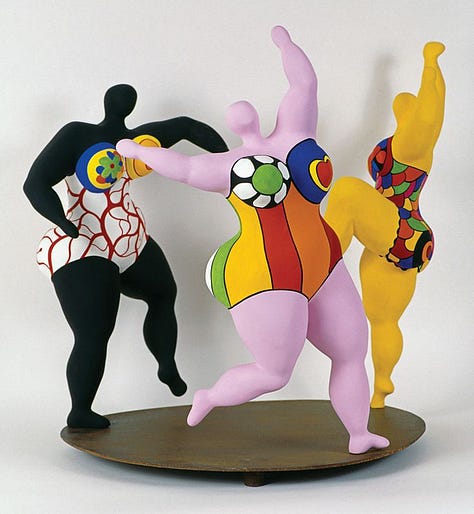
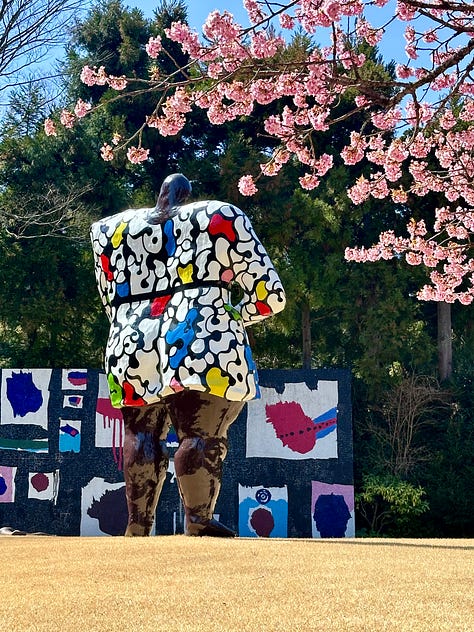
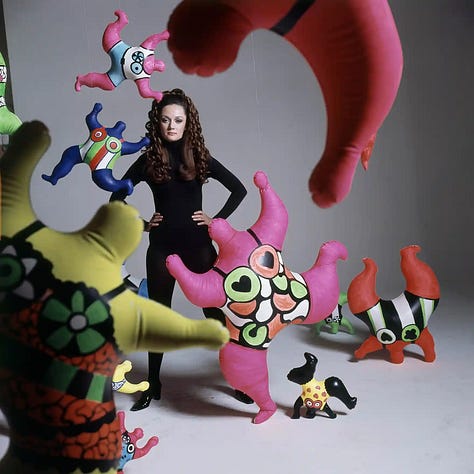
Her art became more whimsical as she moved into her Nana—French slang for a “saucy girl”—phase. She constructed large voluptuous female figures covered in bright colors and shapes. These figures explored women’s roles in society and would come to define Saint Phalle’s style at the core the Tarot Garden.
Inspiration for the garden struck in Spain. When Saint Phalle first beheld Gaudi’s Park Guëll in Barcelona, she experienced what we in the tarot world like to call “a Tower moment”.
“In 1955, I went to Barcelona. There I saw the beautiful Park Güell of Gaudi. I met both my master and my destiny. I trembled all over. I knew that I was meant one day to build my own garden of Joy. A little corner of Paridise. A meeting place between man and Nature. Twenty four years later I would embark on the biggest adventure of my life, the Tarot Garden.”
Inside the Tarot Garden
In many ways, The Tarot Garden was Saint Phalle’s magnum opus—an outpouring of decades of story, research, artistic mastery, and community building.
The garden, which took 20 years to complete, was its own Fool’s Journey, infused with both tarot and personal symbolism: the story of Saint Phalle’s romantic love and loss on the side of the Hanged Man statue, the bed on which she slept during the construction of the garden inside the breast of the Empress, an altar of her photos living within Temperance.
Built atop an Etruscan ruin in Pescia Fiorentina, a small village in Tuscany, Italy, The Tarot Garden holds 25 distinct statutes: the 22 major arcana and three additional sculptures realized by Saint Phalle.
Passing through the arched entryway, you walk uphill on a dusty road. Cicadas vibrate at the same frequency and pitch as your mounting excitement. The trees and bushes that line the side of the path open up to reveal a massive sculpture spewing water from its mouth down steps leading to a blue tiled pool. The Magician, the High Priestess, and the Wheel of Fortune are the first to greet you.
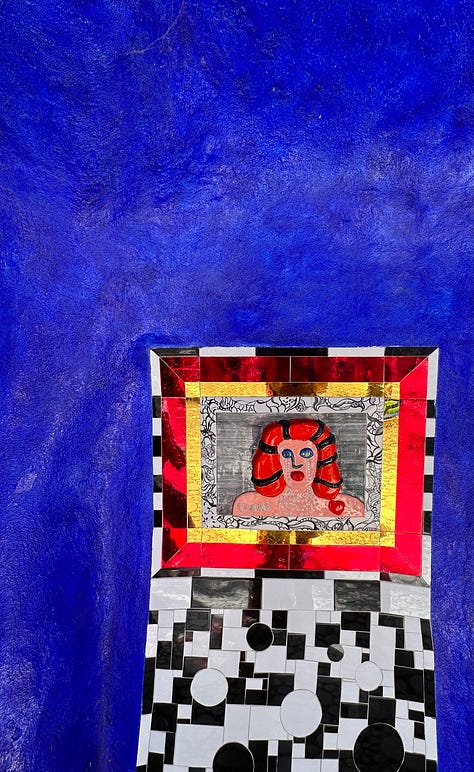
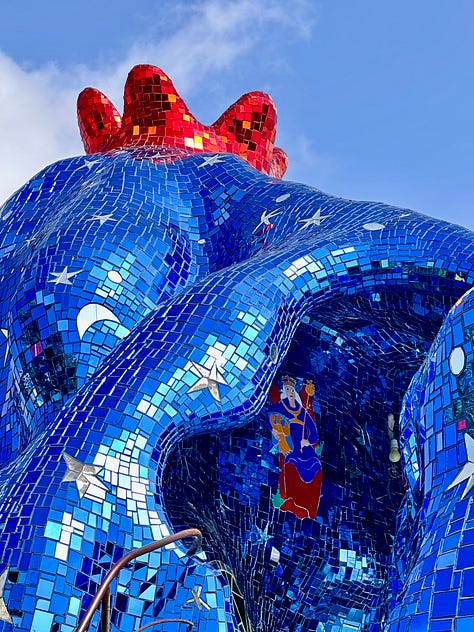
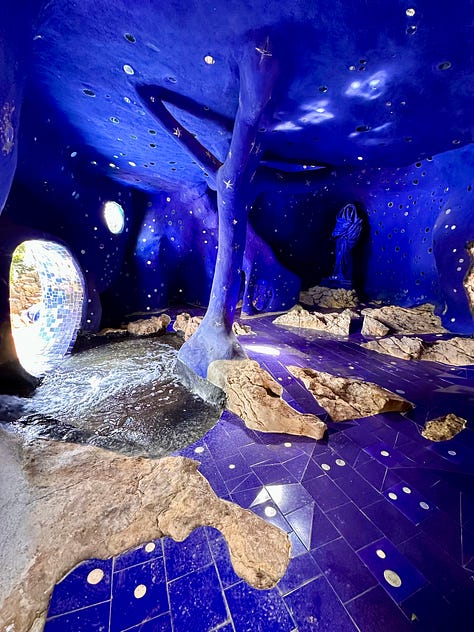
Colors, shapes, curves, and textures rise from the ground and you’re not sure what is whimsy and what contains story. You pull out your map of the park to gain your bearings, and just as soon put it away—the garden is something no guide can show you, you must discover it for yourself.
Just like the tarot, the garden is both potent and meandering, powerful and cheeky. The archetypes of the major arcana present themselves grand and intimidating, but also humble and inviting. You find the semi-private alcoves where you sit with the statues, your teachers, taking in their beauty and all they have to show you.
A map, a mystery, a mission
To me, Saint Phalle is the epitome of Art Witch, shaping the elements around her into story telling tools, play things, and objects of beauty to self-fund her awe-inspiring, interactive sculptures (during her career, she made everything from clothing, to furniture, to perfume). But Saint Phalle’s creation process wasn’t all magic. Her projects took years to finish which, in some ways, is the one of the most impressive things about them.
“Difficulties, love, wild enthusiasm, obsession, and most of all faith. Nothing could have stopped me.”
She faced many roadblocks on the way to completing the Tarot Garden. During one such period, she called on one of the tarot masters of our time, the late Rachel Pollack, to advise her on the project.
Instead of doing a traditional tarot reading, Pollack suggested using the statues as a guide. Saint Phalle drew a map showing where each sculpture stood in the garden, and together they used the major arcana to understand what energy Saint Phalle would contend with for each figure. Though her sculptures were static, this helped her navigate the moving spirit they contained.
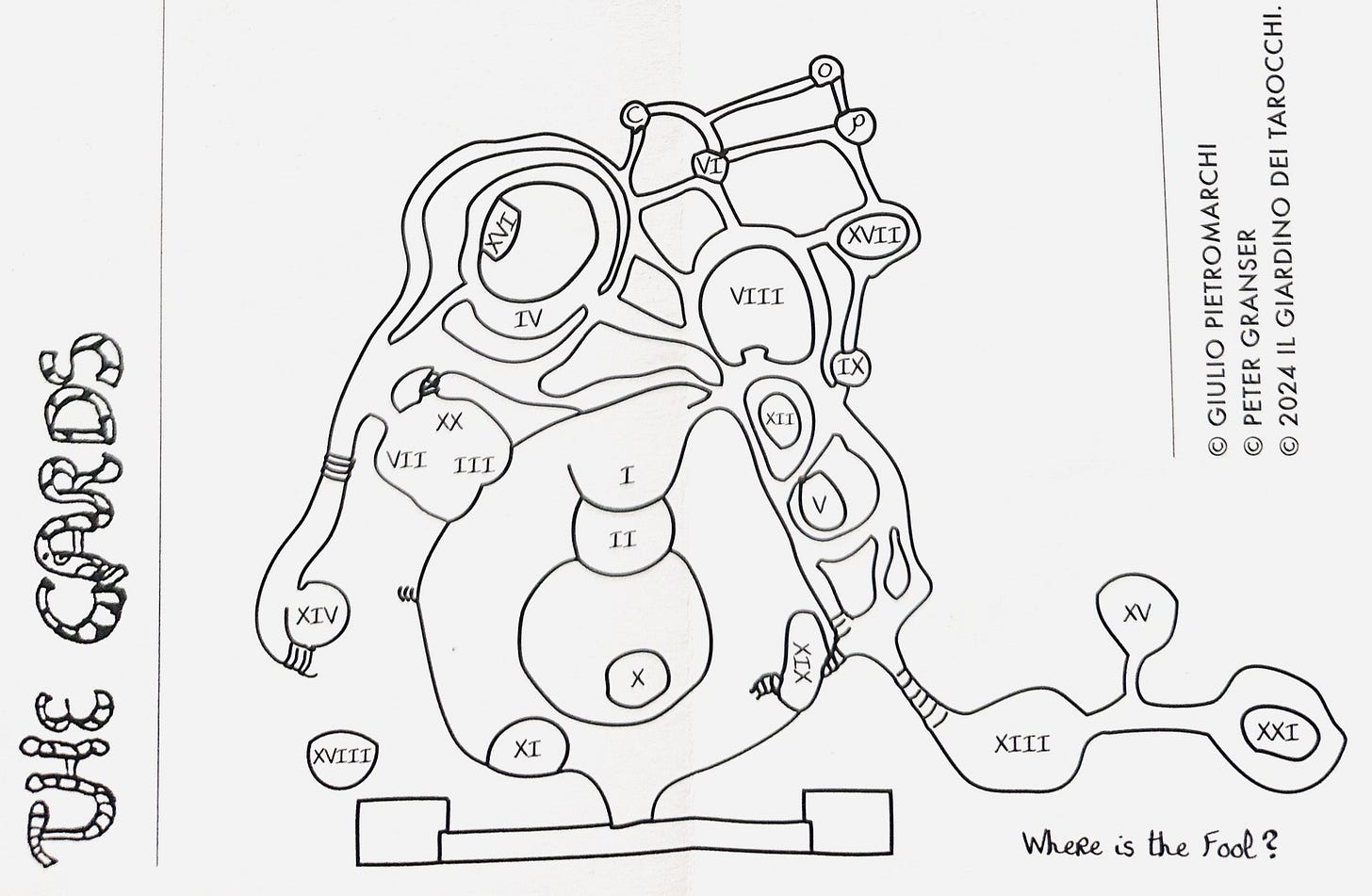
When I ask myself why Saint Phalle would build a park dedicated to these 22 figures, I remember that at their core, tarot cards are a game. Saint Phalle intuitively understood that playing could open us up to new worlds, new perspectives, and new self dimensions.
“If life is a game of cards we are born without knowing the rules yet we must play our hand. Throughout the ages, poets, philosophers, alchemists, and artists have devoted themselves to discovering their meaning.”
Mapping your creative destiny
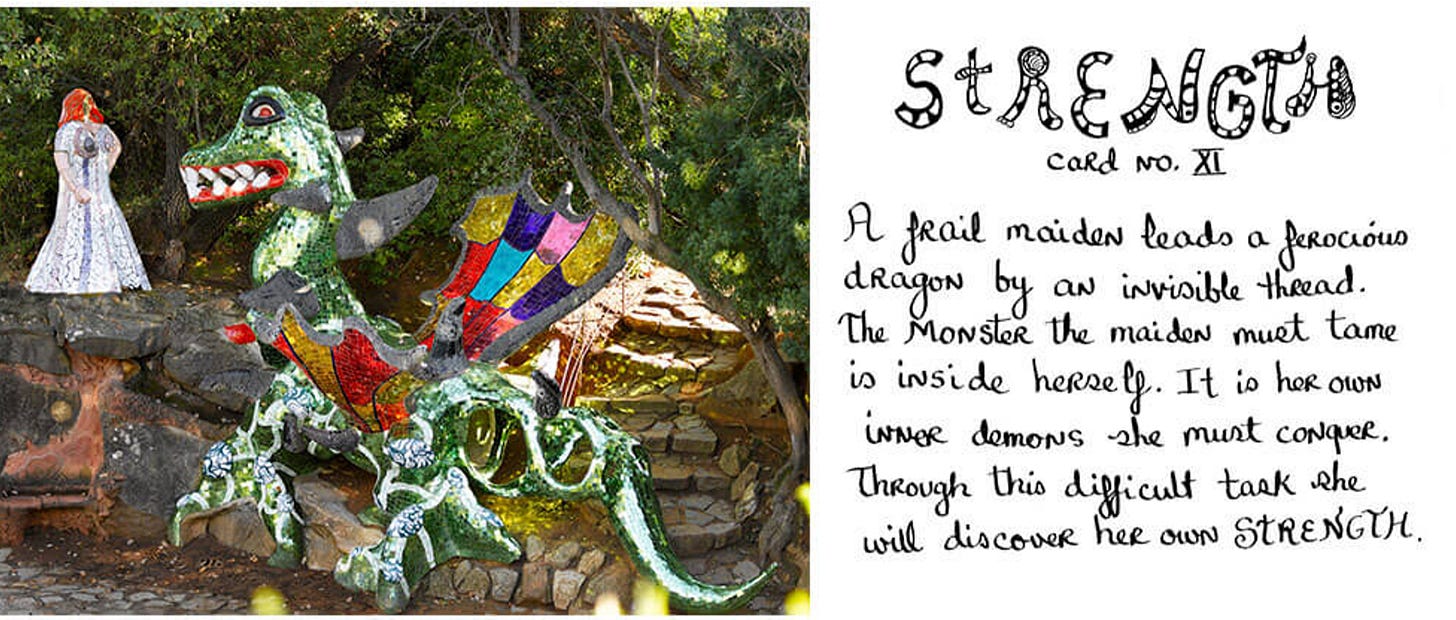
Think about a long-term project in your life where you’re feeling stuck. Maybe it’s something that seems too daunting to even begin. Is it a book that’s waiting to be written? A career transition? Picking up that instrument? Starting your herb garden? Learning to tap dance? Fly fishing? Finally touching your toes?!
Let’s take a page from Saint Phalle’s book and map it out.
Draw a “map” of the steps or phases of your project using images or words
Grab a tarot deck and pull out the 22 major arcana cards
Give them a shuffle and place cards atop each of the steps
Observe how your relationship to each step changes based on the card’s energy
Remember: it’s all play!
Niki (now that we’re all acquainted, I’ll use her first name), was famously quoted saying:
“It’s my destiny to make a place where people can come and be happy: a garden of joy.”
During this Leo season, ponder: What project is waiting to be birthed from inside you? What joy do you contain that the world needs to see?
XO
ALTARU TAROT















Wow! What an inspiration